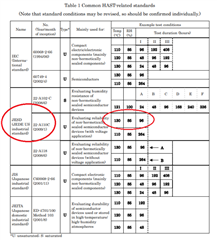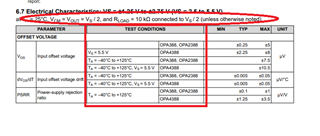Hi team,
My customer wants to try the high temperature and high humidity test(THB).
Could you tell me the test condition?
I think that it should be carried out under the test conditions of the data sheet with JEDEC.
Sincerely.
Kengo.
-
Ask a related question
What is a related question?A related question is a question created from another question. When the related question is created, it will be automatically linked to the original question.



